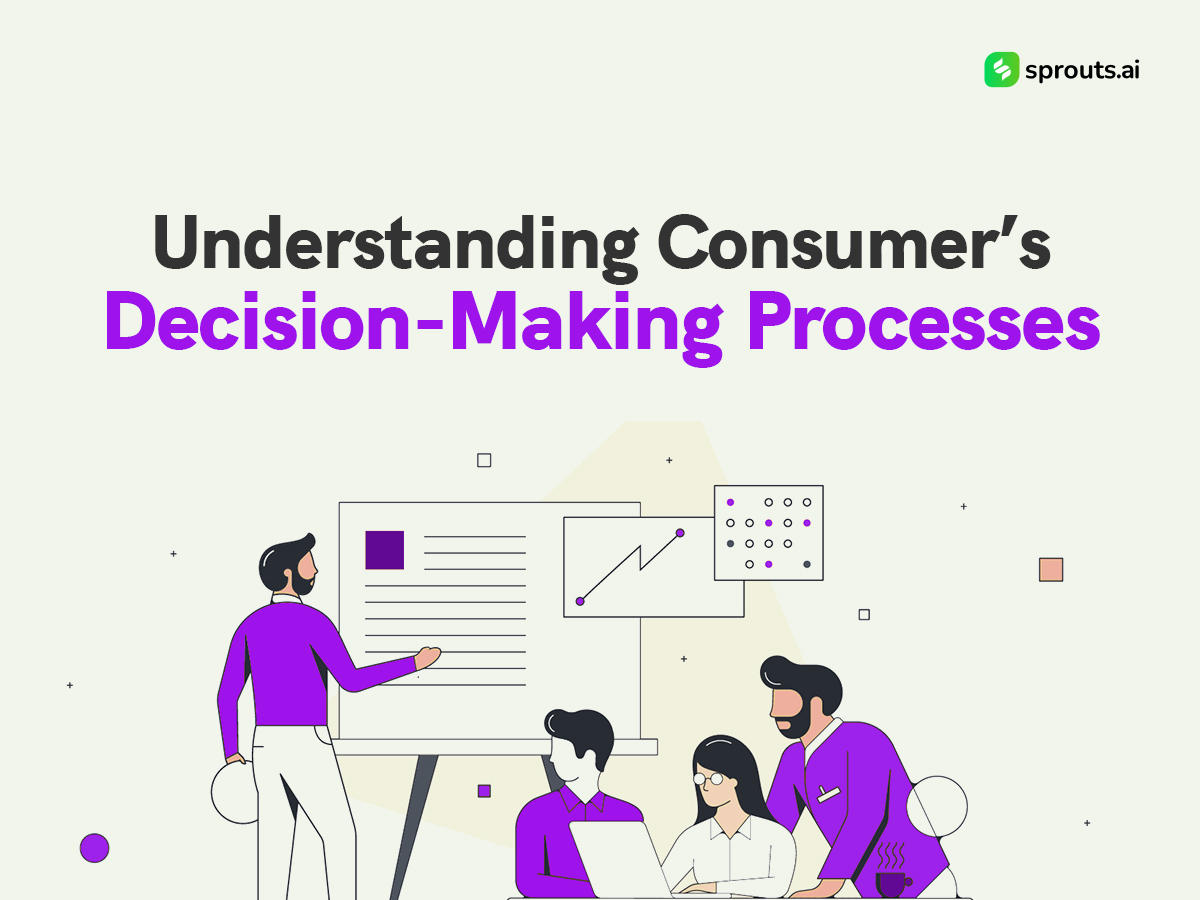Understanding the consumers’ decision-making process has never been more crucial. Consumers make many choices daily, from picking a morning coffee to selecting a new smartphone. But, have you ever wondered what goes on behind the scenes when consumers make these decisions? Join us to unravel the layers of the consumer’s decision-making process and explore the factors that drive purchase choices.
The Prelude: Need Recognition
Imagine waking up one morning and realizing your trusty old laptop isn’t keeping up with your needs anymore. This realization marks the first step of the consumers’ decision-making process – need recognition. Whether it’s a necessity or a desire, the trigger could be anything from a functional gap in our lives to a social influence. Maybe a friend showed off their latest gadget, and suddenly, you’re eyeing a new device too.
Research Mode: Information Search
With the need in mind, consumers embark on the research phase, an integral part of the consumer’s decision-making process. They gather information to understand the available options, features, and benefits. This stage often involves online searches, product comparisons, and seeking recommendations from friends and online reviews. The goal is to make an informed choice, weighing the pros and cons of each option.
Decision Dilemma: Evaluation of Alternatives
Now comes the tricky part – evaluating alternatives, a pivotal stage in the consumers’ decision-making process. Imagine standing in front of rows of laptops at an electronics store, each claiming to be the best. Consumers weigh factors like price, quality, brand reputation, and specific features that align with their needs. In this phase, brands strive to differentiate themselves and appeal to consumers’ requirements.
The Choice: Purchase Decision
After careful consideration, the decision-maker finally selects one option, a culmination of the consumers’ decision-making process. This choice might not solely depend on rational factors. Emotional connections also play a pivotal role. That sleek, metallic laptop might resonate with the consumer’s sense of style and status, nudging them toward the purchase.
Post-Purchase Reflection: Cognitive Dissonance
Once the purchase is made, consumers might experience cognitive dissonance – a feeling of doubt or uncertainty about their choice. This is especially true for big-ticket items, marking a post-purchase phase of the consumers’ decision-making process. They might wonder if they could have found a better deal or if another option was more suitable. Brands can help alleviate this by offering excellent post-purchase support and reinforcing the benefits of the chosen product.
Word of Mouth: Influence of Social Factors
Humans are inherently social beings, and our choices are often influenced by the opinions of others, showcasing the impact of social factors on the consumers’ decision-making process. If a friend raves about a new restaurant, chances are you’ll be more inclined to try it out. Similarly, positive online reviews and recommendations can significantly impact a consumer’s decision-making process. Brands recognize this and actively seek to create positive experiences that customers will share.
Psychological Triggers: Emotions and Perceptions
Consumers are not purely rational decision-makers; emotions and perceptions come into play. A luxury watch isn’t just a time-telling device; it’s a statement of status and success, highlighting the emotional dimension of the consumers’ decision-making process. Brands tap into these emotional triggers to create a connection between their products and consumers’ aspirations. Colors, packaging, and advertising all contribute to how a product is perceived.
The Power of Habit: Routine Purchases
Not all decisions are complex and research-intensive, showcasing the habitual aspect of the consumers’ decision-making process. Routine purchases, like buying toothpaste, are often driven by habit. Consumers stick to what they know works without investing much thought, a streamlined segment of the consumers’ decision-making process. Brands work to establish such habits by consistently delivering reliable products.
Cultural and Societal Influence: The Larger Picture
Beyond personal preferences, culture and society shape our choices, emphasizing the role of cultural and societal influence in the consumers’ decision-making process. Certain brands or products might hold cultural significance, and societal norms can influence what’s considered acceptable or desirable. Brands that align with these values can build strong connections with consumers.
Digital Age Dynamics: Online Shopping and Beyond
The rise of e-commerce has introduced new dimensions to the consumers’ decision-making process, particularly in the context of online shopping. Online shopping provides convenience, but it also demands trust, as consumers can’t physically touch or try products. Consequently, factors like website design, ease of navigation, and secure payment options have gained significance in the consumers’ decision-making process.
Each purchase decision is a carefully choreographed ballet of need, desire, information, emotion, and influence in consumers’ decision-making process. Understanding this intricate process empowers businesses to create products and experiences that resonate with consumers profoundly. As technology evolves, so does the decision-making landscape. Brands that adapt, innovate, and prioritize consumer understanding are the ones most likely to thrive in an ever-changing market.
So, the next time you make a purchase – whether it’s a new gadget or a simple snack – take a moment to reflect on the multitude of factors that have influenced your decision within the consumers’ decision-making process. By delving into its depths, we can unlock insights into human buying behavior and expectations.

